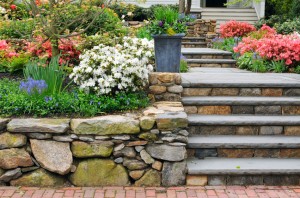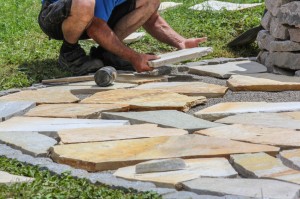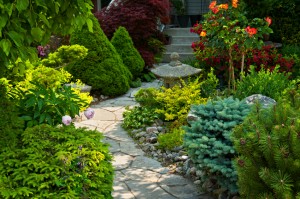What Kind of Natural Stone is Best for What Use?
When visiting local landscaping suppliers in search of natural paving, wall and pathway products, it is easy to become overwhelmed with the variety of choices available. Most suppliers offer both manufactured and natural products with different characteristics and purposes. Understanding how a few of the most popular of these are made and used should help sort out any initial confusion.
Building Natural Surfaces and Walls
Two of the most popular choices for creating a natural look to landscaping are armour stone and flagstone. Both exhibit a range of earthy colors, textures and unique visual patterns derived from the specific quarries where they were mined. However, each type has different purposes.

Flagstones are flat and may have natural or cut surfaces. They are ideal for patios, walkways, pool surrounds and short retaining walls when stacked. The material is especially weather resistant. It withstands decades of freeze-thaw cycles without breaking down. It exhibits an even greater variety of colors than armour stone, from pinks to greys, blacks to light purples and myriad shades of brown or gray. Sandstone types of flagstones have an enduring, natural slip-resistant texture.

Concrete and Clay Brick

Clay brick is made from a wholly natural material that is shaped, dried and then fired in kilns to achieve its strength. Concrete brick is made with Portland cement and aggregates mixed in specific proportions. It is cured, not fired, to create chemical bonds between its components. These different materials and manufacturing processes result in distinctly different characteristics:
• Clay brick expands over time, whereas concrete brick shrinks
• The color of clay brick is determined by the type of clay used
• Concrete brick’s “natural” color is gray, but pigments can impart any shade.
• Over time, the color of pigmented concrete fades, but clay brick tends to retain its color
• Concrete pavers come in a wider variety of textures and shapes than clay brick
The basic trade-off between the two is concrete’s higher structural strength and integrity versus the more natural look of clay brick. Both can be used to great advantage in your landscape design, however, depending on your aesthetic goals and practical requirements.
A Little Knowledge Goes a Long Way
Now that you are familiar with some of the most popular landscaping materials, you are ready to apply your knowledge to your personal landscaping project. You could also consult a landscape designer who will consider your goals, your lifestyle, current architecture and budget to find what best suits your needs.
